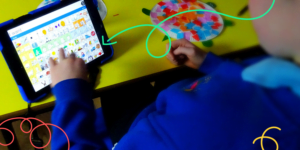It is commonly known that Autism Spectrum Disorder can come alongside a multitude of additional disorders and symptoms. When these additional symptoms are noted extensively enough to be considered part of a separate disorder, they are often referred to as comorbidities.
Autism itself, as well as comorbidities such as Sensory Processing Disorder, can have profound impacts on the ways in which those with the condition process sound. This can extend from the impact sounds neurotypical people may interpret as normal could have to the understanding those with ASD have of conversations and other sensory input.
Auditory Hypersensitivity
One of the most commonly diagnosed symptoms of ASD is sensory processing challenges. In fact, the STAR institute has recently produced a piece of research that suggests up to 75% of children with autism have ‘significant symptoms of sensory processing disorder’.
Sensory processing disorders can impact touch, sight, taste, and hearing in equal measure. This means that individuals are often very sensitive to sensory input, resulting in them becoming overwhelmed, overstimulated, irritated, or avoidant.
When it comes to auditory sensory input, those with autism are far more likely than others to experience an oversensitivity to certain sounds. This is referred to as auditory hypersensitivity.
Auditory hypersensitivity is a relatively common trait exhibited by those with a diagnosis of autism. It can impact how well a person is able to regulate their emotions and engage in meaningful communication while overwhelming sounds are present.
Understanding Conversations
Research has increasingly suggested that people on the autism spectrum do not process information that they have heard as quickly as their peers. This means, simply put, that the information portrayed to them via verbal communication takes longer to understand and form a response to.
This can be a frustrating consideration to manoeuvre for those with autism, and thus many are likely to disengage with a conversation moving too quickly for them to be actively able to participate.
While no specific aversion to auditory stimuli facilitates this, the fact remains that it can certainly hamper communication because of challenges in interpreting sound.
How Can You Help?
Many with auditory hypersensitivity employ the use of ear defenders to decrease the extent of the offending sound that they are exposed to. Others simply try to avoid them, but this can be easier said than done.
Ear defenders are a great way of giving a person with autism the option to remove the object of their stress, even just for a short while. This can offer much-needed security and safety, not to mention the relief of knowing that unpleasant sensory input might be around every corner.
Another option, when it comes to communicating with those diagnosed with autism, is to ensure you are conversing at a pace that is considerate of the extended time period it might take for them to respond.
This may only mean an extra few seconds to you, but it will offer a real opportunity for them to truly engage with conversations they have likely avoided in the past.







